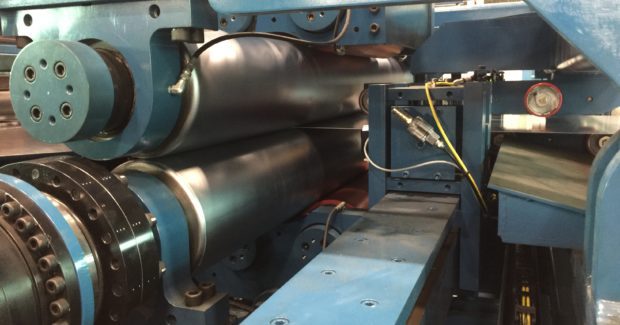The Silver Lining of Lease Accounting: What to Know About the New Standard
Leasing and finance are the most common payment method used by businesses to acquire equipment and software. Here are some newly enacted benefits that shops will realize through new changes in accounting and tax laws.
Posted: November 30, 2018
The long-awaited new rules for lease accounting approved by the Financial Accounting Standards Board (FASB; Norwalk, CT) go into effect for financial periods starting after December 15, 2018, for public companies, after December 15, 2019 for private companies, and with a modified application for any other financial period presented. As is often the case with change, many organizations transitioning to the new accounting standard, known as Accounting Standards Codification Topic 842 (ASC 842), have questions and concerns about how it will affect their current leases and future equipment financing decisions. Only four percent of public companies report their ASC 842 implementation is complete and 63 percent of non-public companies had not yet completed the initial ASC 842 assessment phase, according to a Q4 2018 survey by PwC.
An examination of the impacts of ASC 842 shows that not only are many of the lease accounting changes relatively neutral, there is actually a silver lining with numerous positive impacts.
THE UPSIDE OF LEASE ACCOUNTING CHANGES
While ASC 842 will initially require new processes and reporting, the benefits of leasing remain and are perhaps improved because of other developments. Combined with changes in the U.S. tax code, lease financing, with its wide range of inherent advantages, will continue to be a beneficial option for equipment acquisitions. ASC 842 is required to be implemented for existing leases, but it provides lessees with a number of ‘practical expedients’ to make the transition less burdensome. If elected, a practical expedient must be applied to all leases and agreements. The FASB has specifically stated that the Lease Liabilities created by capitalizing leases should not be considered debt by most financial institutions. In fact, now that Lease Liabilities will be on the lessee’s balance sheets, the rating agencies will no longer have to calculate it on their own or guess at how much to capitalize; it is now clearly and more accurately measured for them under the new standard.
The new rules have no impact on the income statement. There should be no effect on debt covenants. The rules for classifying whether a new contract is a Capital (Finance) lease or an Operating lease are virtually the same as before under generally accepted accounting principles (GAAP) except that an Operating lease will now be a Capitalized Operating lease. Although an Operating lease will now be capitalized, the capitalized asset cost by definition will be lower compared to a loan or cash purchase resulting in a lower asset against which Return on Assets would be measured. The business processes required to accommodate ASC 842 also have the potential to reap unexpected advantages. Better information and controls can help enable better tracking and asset management, avoid redundancies and enable the negotiation of better lease terms throughout the organization.
TAX REFORM BENEFITS FOR FINANCING
Tax reform passed at the end of 2017, known as the Tax Cuts and Jobs Act (TCJA), introduced many changes that organizations should consider when making equipment financing decisions. TCJA provides more reasons now than previously for leasing or financing property using tax-oriented financing structures. The pure complexity of the interrelated rules in TCJA by themselves may lead some organizations to lease. Under TCJA, current deductibility of interest expense is limited to 30 percent of the tax version of EBITDA, calculated as Earnings Before Interest, Taxes, (tax) Depreciation and Amortization multiplied by 30 percent. In a few years, the limitation will be further reduced to 30 percent of tax EBIT, an even lower number particularly given the high rate of tax depreciation.
Additionally, U.S. subsidiaries of multinational parents will also have to contend with BEAT (Base Erosion Anti-abuse Tax), which forces them to further examine the extent of their intercompany borrowing. Leasing helps lessees avoid both the interest and BEAT limitations because rent deductions remain unrestricted compared to interest payments. Leasing allows companies without the ability to efficiently use 100 percent bonus depreciation to gain the benefits of it through a reduced lease rate when the lessor can claim the 100 percent bonus depreciation. Lessees may also reap an economic benefit by entering into a sale-leaseback for an asset they may have expensed 100 percent in 2017 at a 35 percent tax rate since the gain taxed on the sale (assume a 100 percent gain) would now be taxed at a more favorable rate of 21 percent.
BENEFITS OF LEASING CONTINUE UNDIMINISHED
A majority of U.S. businesses finance their equipment acquisitions, and the following long-standing reasons why they do remain intact under ASC 842:
- Tax management: Leasing allows lessees to more efficiently manage some of their taxes; when they cannot utilize all the deductions, the lessors can and are able pass the benefits through via lower rates.
- Finance 100 percent: Arrange 100 percent financing of equipment, software and services with 0% down payment while still recording less than 100 percent on your balance sheet.
- Keep up-to-date and avoid residual value risk: Keep current with technology by acquiring more and better equipment compared to loan financing and avoid residual risk because the lessor assumes that risk.
- Accelerate ROI/Improved ROA: Rather than capitalizing 100 percent of an asset, a capitalized lease is generally reported at a lesser amount.
- Cash flow management: Make smaller more manageable and flexible payments while the equipment generates revenue.
- Benefit from bundling: Bundle the equipment, installation, maintenance and more into a single, easy-to-manage solution.
- Save cash: Save limited cash for other areas of the business, such as expansion, improvements, marketing or R&D.
- Outsource asset management: The equipment financing company can manage an organization’s equipment from delivery to disposal.
- Customize terms: Set customized payments to match cash flow and even seasonal income fluctuations.
- Hedge against inflation: Lock in rates with a lease to avoid future inflation.As organizations modify existing leases or enter into new leases or contracts, they will benefit from an understanding of all the implications of the new standard.
It’s important to check with a professional tax advisor or accountant who can address the business’s particular situation. With adequate information and preparation to implement ASC 842, lessees can continue to reap the advantages of financing. For more information, please click here.
















